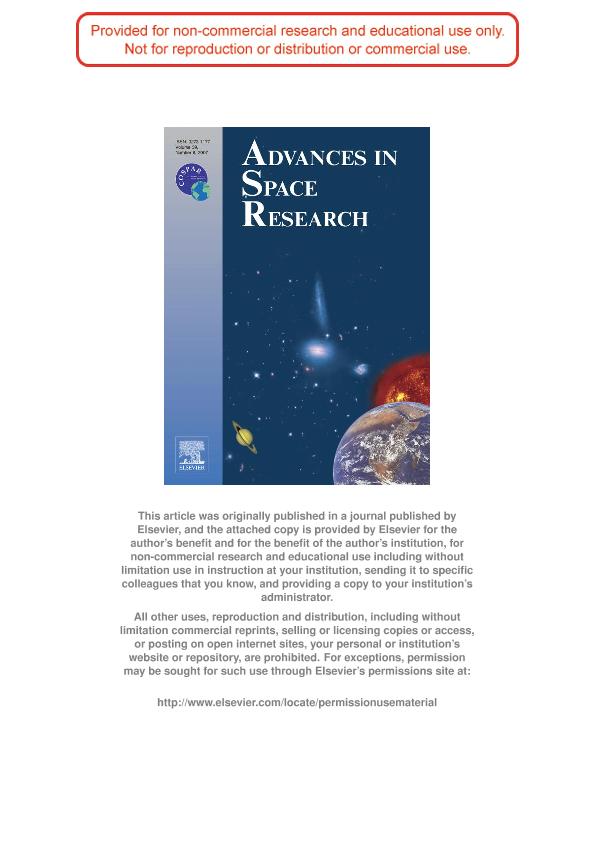Artículo
Is there an influence of short-term solar activity variations on mesopause region airglow?
Fecha de publicación:
12/2007
Editorial:
Elsevier
Revista:
Advances in Space Research
ISSN:
0273-1177
Idioma:
Inglés
Tipo de recurso:
Artículo publicado
Clasificación temática:
Resumen
A-priori, rapid variations of solar activity that directly impact on the terrestrial environment should be expected to influence airglow brightness in the mesopause region via the photodissociative production of atomic oxygen, as it does on the time scale of the solar cycle. To find out whether this is supported by our midlatitude data, we analyze the strongest geoeffective solar activity events, in times when
data from the Argentine airglow spectrometer were obtained. An alternative interaction path involving geomagnetic perturbations mediated by the solar wind can also be expected to affect the mesopause region. Daily mean values of different solar and geomagnetic activity indices, and more than 1400 nights of airglow brightness and rotational temperature measurements (mostly from El Leoncito, 31.8S) are available for this study. The diagnostic value of this investigation is augmented by using information corresponding to two different nominal altitudes (87 km for the OH(6–2) band, and 95 km for the O2b(0–1) band). Our approach ranks the (solar and airglow) events by their respective strength, which automatically provides emphasis on the more important cases. We conclude that if an airglow response to strong solar events exists, it is only short-lived and should therefore most easily be detectable by daytime observations. On the other hand, we did not find signatures in our airglow data that could convincingly be related to geomagnetic storms.
Palabras clave:
Airglow
,
Mesopause Region
Archivos asociados
Licencia
Identificadores
Colecciones
Articulos(IAFE)
Articulos de INST.DE ASTRONOMIA Y FISICA DEL ESPACIO(I)
Articulos de INST.DE ASTRONOMIA Y FISICA DEL ESPACIO(I)
Citación
Scheer, Jurgen; Reisin, Esteban Rodolfo; Is there an influence of short-term solar activity variations on mesopause region airglow?; Elsevier; Advances in Space Research; 39; 8; 12-2007; 1248-1255
Compartir
Altmétricas




